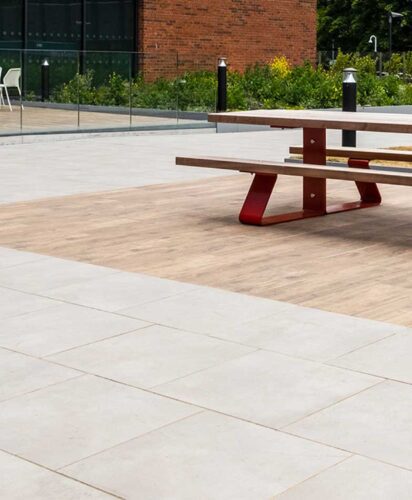We often receive questions from specifiers and construction professionals about whether they should opt for porcelain or concrete paving. Each material has advantages and disadvantages and is suited to different applications and projects. In this comprehensive guide, we tackle the porcelain vs concrete slabs debate and provide you with all the data you need to make an informed decision.
How is porcelain paving made?
Porcelain paving slabs are made from a combination of clays, quartz, sand and feldspar, fired at high temperatures and exposed to rapid cooling. This results in a beautiful material that is strong, dense, non-porous and perfect for paving.
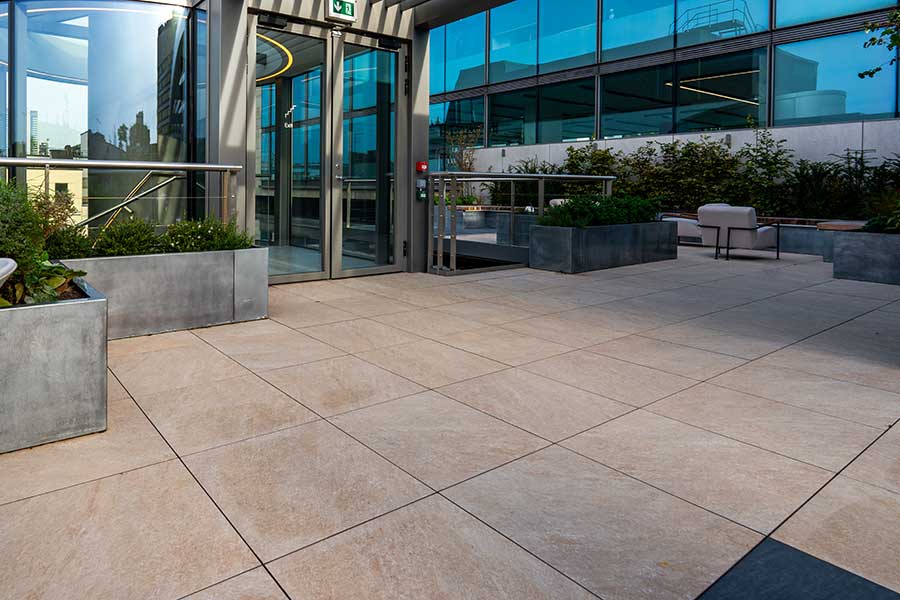
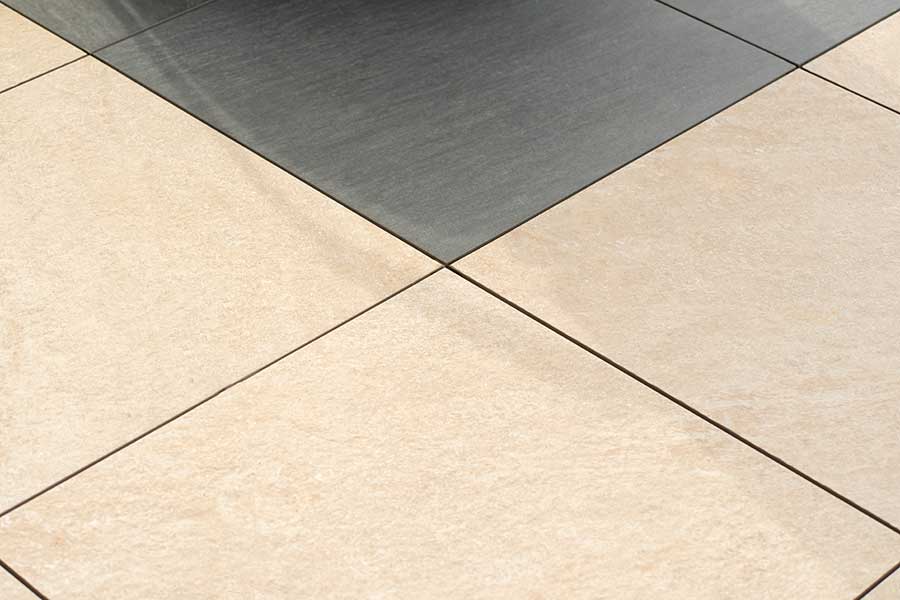
Advantages of porcelain paving
Due to its aesthetic appeal and versatility, porcelain paving is a popular option for paving projects. It is available in several finishes, ensuring specifiers have a better chance of finding the perfect paving slab for their project. As well as a spectacular finish, porcelain paving benefits from the following performance benefits.
Durability and weather resistance
Porcelain is a remarkably durable and long-lasting paving material. Once installed, it is considered one of the most robust paving materials available and is resistant to heavy impacts, moisture, stains, scratches and general wear and tear. This makes it a good option for high-traffic areas.
Low maintenance
Unlike other paving materials, porcelain requires next to no maintenance. As long as you wash the surface with water and soap and clear dirt and debris relatively frequently, your porcelain paving slabs should retain their pristine appearance for much longer than alternative materials.
Environmentally friendly
As porcelain is made from clay and other natural materials, it is a fairly sustainable choice. The fact you can recycle it at the end of its lifespan also contributes to a more circular economy. However, if you want a truly environmentally friendly porcelain solution, investigate the manufacturing process. Some porcelain manufacturers utilise far more energy-intensive processes than others. Learn more about the eco-friendliness of porcelain
Energy efficient performance
Porcelain’s thermal inertia means heat is stored within the material and released slowly and uniformly, helping buildings avoid extreme spikes and drop-offs in temperature and moderating indoor microclimates. At the same time, this quality makes it an excellent choice for under-floor heating. Efficient heat storage and dispersal translate to energy savings in the long run, suggesting porcelain can play a critical role in energy-efficient construction systems.
Non-combustible and non-slip
Finally, porcelain is inherently non-combustible, making it well-suited to paving projects that demand fire-resistant materials. It benefits from a Class A1 fire resistance rating. It also achieves excellent results in the slip-resistance test, so the paving surface remains safe, even when wet.
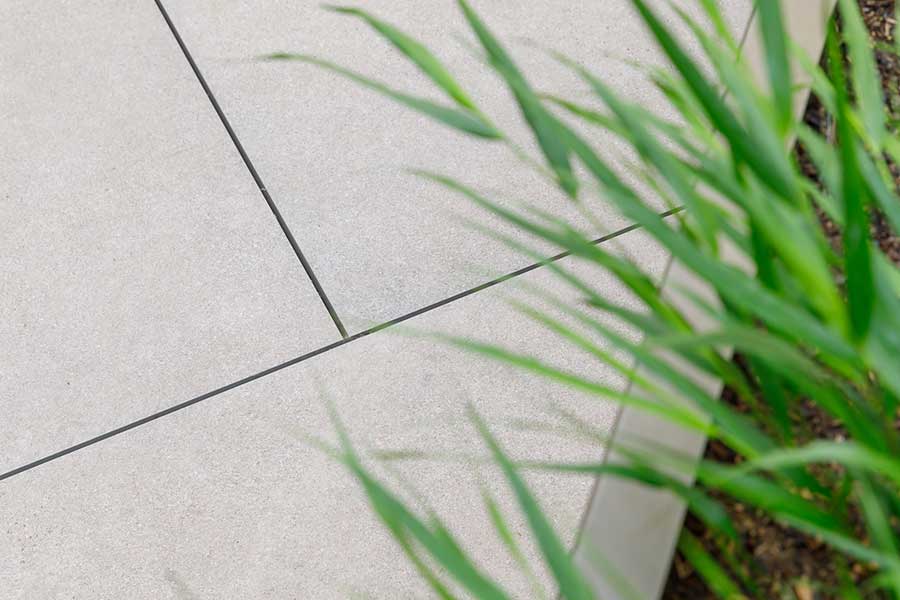

When not to use porcelain paving
Despite being a phenomenal paving material, some downsides to porcelain may mean it is not the best option for every project.
Weight and brittleness
Porcelain is a heavy material that can be brittle if not handled properly during installation. This makes it a more challenging material to work with when completing challenging construction projects with restricted access or other similar difficulties. Once in place, brittleness and weight are not significant issues.
Price
Porcelain is more expensive than many other paving materials, so you may want to consider concrete slabs if working on a tighter budget. That said, porcelain typically outperforms all other materials. While you can pay a higher upfront cost for porcelain, its longevity may balance the overall costs in the long run.

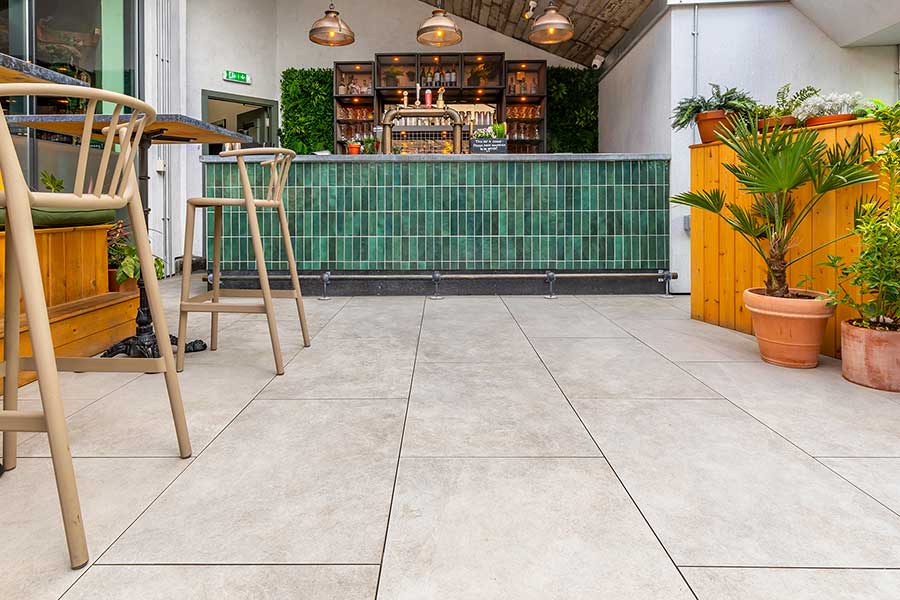
How is concrete paving made?
Concrete is a composite material typically made from cement, aggregates, water and various admixtures. To make paving slabs, concrete is poured into moulds and dyed to produce different shapes, textures and finishes. It is a fairly straightforward, low-cost process that results in versatile paving material.
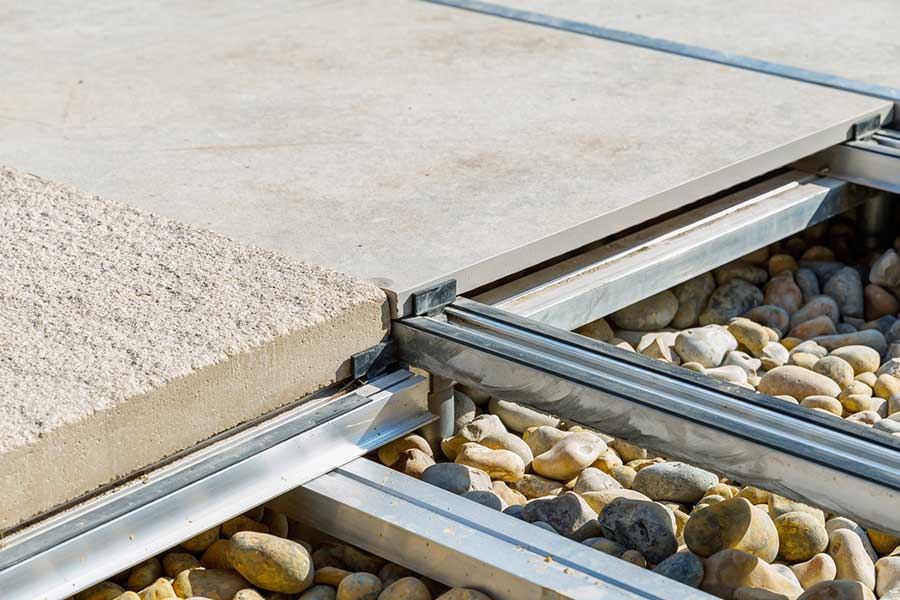
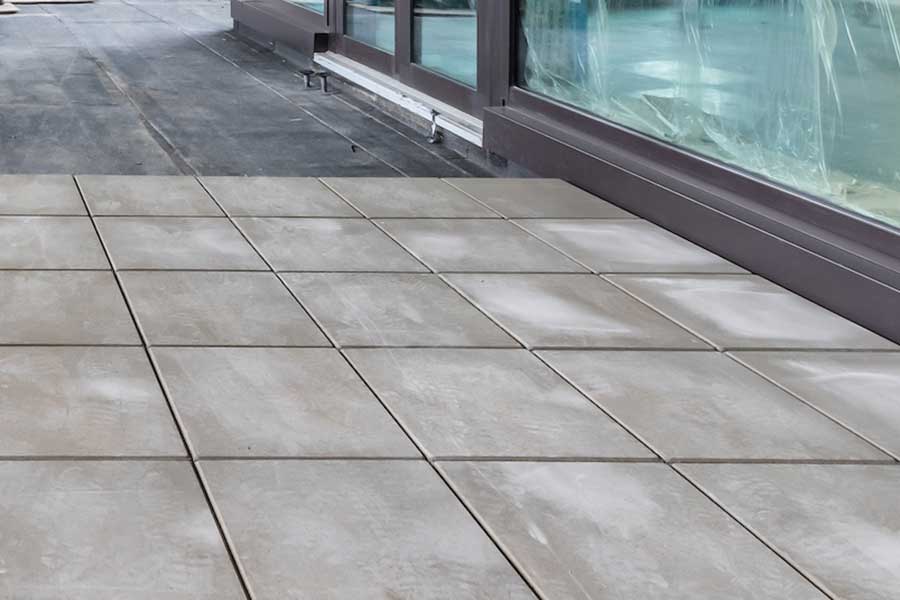
Advantages of concrete paving
Concrete paving offers a different set of benefits. While it may not have the reputation of porcelain, concrete is a highly versatile material to work with and can deliver outstanding results.
Affordability
Price-wise, concrete is more cost-effective than porcelain. It makes it the preferred choice for large-scale projects where budgetary restraints prevent the use of porcelain. Concrete is the best solution if you are looking for a budget-friendly paving option.
Durability
Concrete slabs are also very durable and resistant to chips, cracks and other damage. Compared to porcelain, concrete slabs may succumb to fading or erosion slightly sooner. However, they will outlast many other paving materials and stand the test of time.
Low maintenance
Concrete slabs also require relatively little maintenance. Regular cleaning with soap and water will preserve the finish while sweeping the surface and ridding it of debris that could cause issues will also help. Some concrete paving slabs require re-sealing to keep moisture out, as the material is more porous than porcelain.
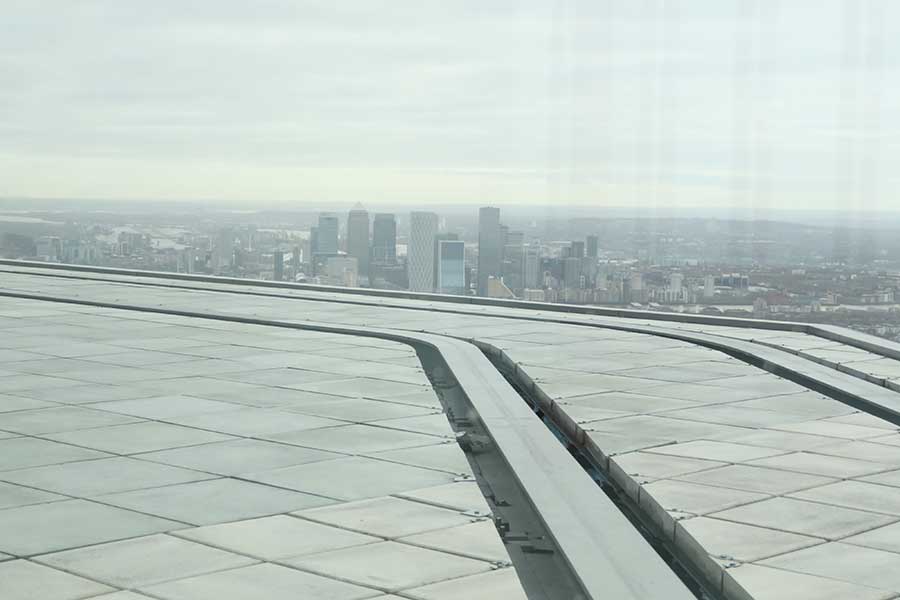
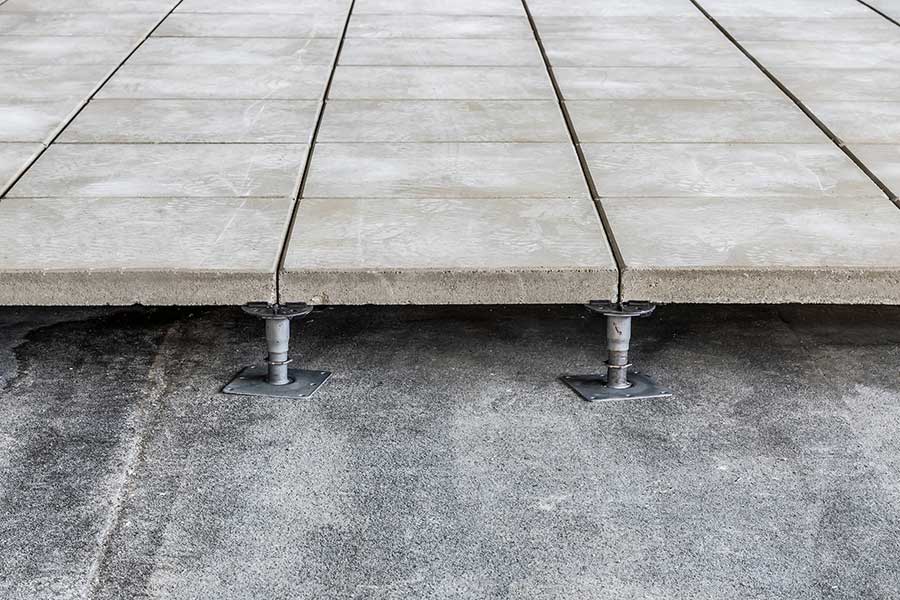
When not to use concrete paving
When it comes to the downsides of concrete paving, we recommend considering the following factors.
Aesthetic appeal
While many appreciate the concrete look, most specifiers, designers, architects and building owners prefer porcelain’s aesthetic appeal. That’s not to say that you can’t purchase concrete pavers that look fantastic, though. High-quality manufacturers can achieve some truly beautiful finishes.
Fading
Due to the pigments used in concrete paving slabs, they can fade when exposed to prolonged sunlight. As such, they are not ideal for paving areas that will be in direct sun for most of the day, as this has the potential to shorten their expected lifespan.
Is porcelain more durable than concrete?
Generally, porcelain paving slabs are more durable and guarantee greater longevity than concrete slabs. They are made to withstand higher pressures and don’t erode or fade at the same speed as concrete paving slabs. However, this only applies to slabs once they are installed. Prior to installation, you need to be more careful with porcelain paving slabs, as they have a greater chance of cracking or splitting when handling them.
Porcelain vs concrete slabs – RYNO can help you
At RYNO, we’re experts in both porcelain and concrete paving slabs. We provide both products as part of our smart paving solutions and have played an influential role in developing innovative porcelain and concrete products for the next generation of paving projects. As such, we are perfectly positioned to help you make an informed decision about which material is right for your project.
If you have any questions or would like the assistance of our knowledgeable team, don’t hesitate to contact RYNO and discuss your needs with our experienced advisors.
